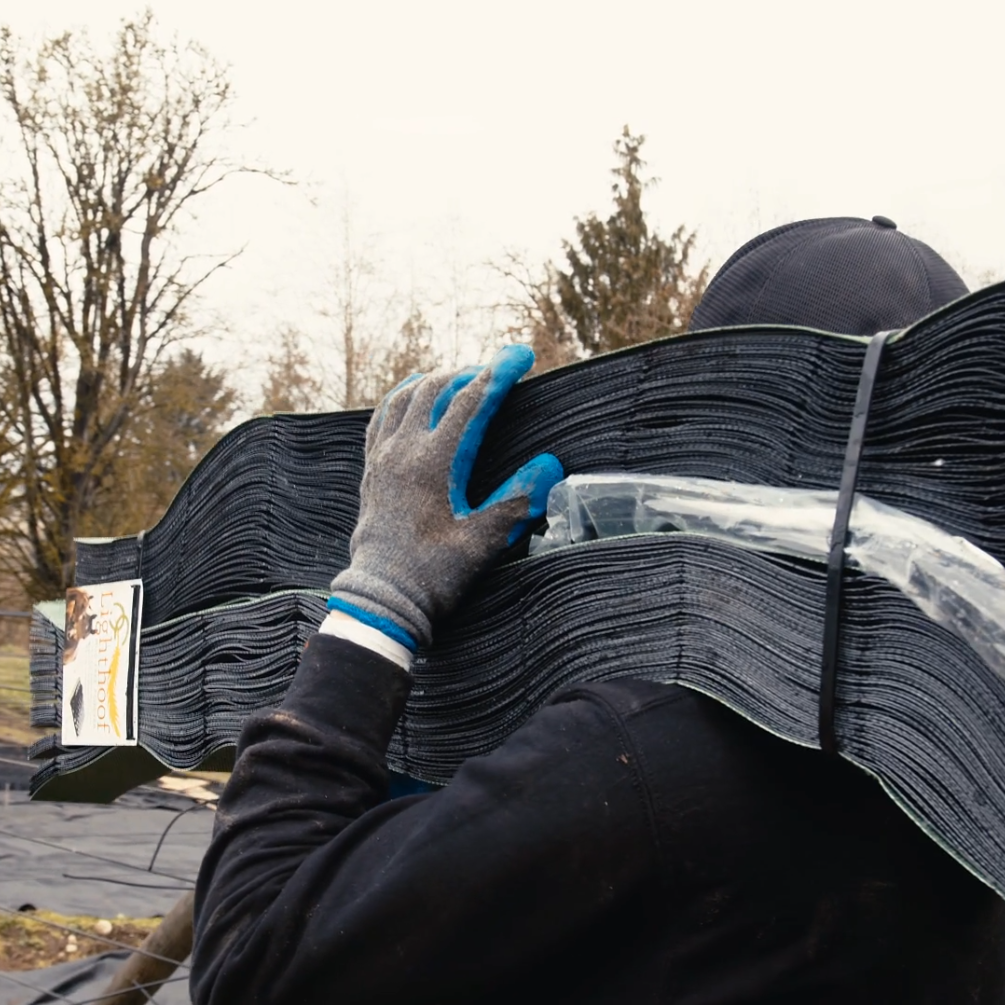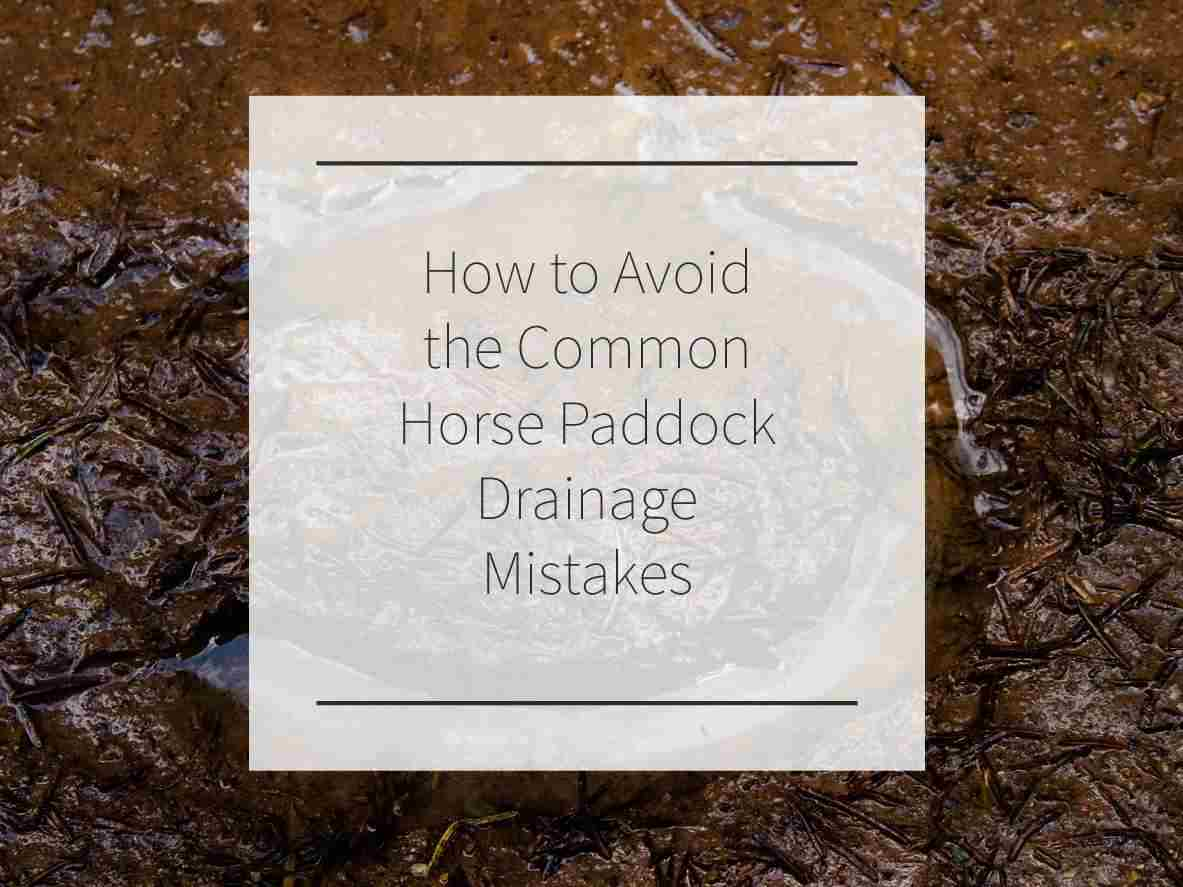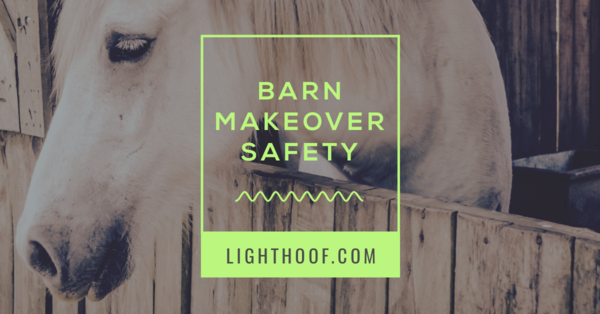Paddock drainage is a major buzz word in the mud management world. However, as we discuss in our article on ground stability, drainage is not actually the most important factor in keeping mud from forming in your horses’ high traffic areas.
In fact, even a paddock that’s graded for drainage can turn into a mud pit as the water moves across unstable ground that is being churned up by the plunger action of hooves.
But we know that all of the water that falls on your paddock (either directly from the sky or as runoff from other areas) has to go somewhere, so a discussion on drainage isn’t all together unnecessary.
When we install Lighthoof to provide stability and prevent mud, we have the opportunity to lock in positive terrain features that will give our water a place to go. It’s important to consider your current situation in regards to the topography of your paddock before installing Lighthoof.
If your slope and layout is such that water will flow into your barn, or anywhere else that you don’t want it, then you will want to avoid locking in that problem by installing Lighthoof without adjusting your grade.
Conversely, if you are able to adjust the terrain to divert water from places you’d like to be dry, you can protect that feature from erosion or compaction by hoof traffic by laying Lighthoof over it.

Here’s an example...
Let’s say your barn sits at the downhill side of your gradually sloping paddock and your stall doors are open for in and out access. You can use shovels or equipment to dig a wide swale (basically a gently curving shallow ditch) uphill of your barn to catch water as it moves down the hill and direct it away from your stalls. This type of drainage feature is often known as a curtain drain and, with Lighthoof, it’s possible to do this within your paddock.
Because Lighthoof is flexible enough to follow the ground through the swale, it protects the sides of the channel from collapse as horses easily walk through and over the gradually undulating open drainage feature.
The Problem with French Drains
Many people ask if they should use a French Drain in this situation, and the answer from multiple horse farm design experts is NO! The reason why you want to avoid using a French Drain for paddock drainage is that French Drains are very susceptible to damage from crushing. This is the same reason that you don’t see French Drains being used in locations which are frequently driven over by vehicles.
The other reason that a French Drain is not to be used within a horse paddock is that it can quickly become clogged with horsehair, manure, hay scraps, and dust or mud. Once clogged, it is very difficult to troubleshoot or repair without having to dig up the whole drain.
PRO TIP: Keep your use of French Drains limited to areas where horses don’t have free access and use supported open drainage features within your paddock.
If you are lucky, you can gradually slope your entire paddock toward a vegetated buffer or pasture that only gets summer use. That way, with Lighthoof to protect your ground stability and provide a smooth gravel surface, your rainwater will flow out of your horse’s area and into the thirsty roots of some grateful native plants.
If you are stuck with a topography that’s got water running somewhere undesirable, or simply sticking around and making a puddle, take a good look at the terrain and see if you can dig some wide, shallow swales to direct water out of your paddock. Once you’ve installed Lighthoof over your adjusted ground, your paddock drainage is established, protected, and ready to go to work for you in heavy rain.
The Through Drainage Myth
Another paddock drainage myth that’s always circulating is the notion of water percolating. Yes, many people think that the key to a mud-free paddock is to invest a lot of money on drainage gravel or other products that will allow water to drain through into the ground. Again, the reality of heavy use horse areas creates challenges that other drainage situations don’t face: namely, clogging and compaction.
Horse manure is a fine particulate organic matter that quickly sponges into the gaps between loose gravel (known as void space) which allow for drainage. These pathways become clogged in ways that are impossible to remove and hinder or prevent adequate through drainage. Hair, hay scraps, and other fine organic particles do the same.
The other thing to consider is whether or not the ground beneath your through-draining surface will accept water as quickly as you need it to. If your previous surface was a muddy paddock, then the answer is a resounding NO!
Traffic from horse hooves compacts the ground fully to the point where it is very difficult for it to absorb water. If you had mud before, then you know that your ground isn’t absorbing water quickly enough. Water trapped between this compacted base and your “drain” layer that has nowhere to go can move back up through your void spaces creating a wet pool.
Water Runs Downhill
Paddock drainage isn’t as mysterious as it may seem and it’s not the be-all end-all of your mud troubles. But it is important to remember the golden rule of drainage: water runs downhill.
When you are using Lighthoof to stabilize your high traffic areas and eliminate mud, keep this in mind so that you can use your stabilized terrain to your advantage to move the water that you will receive from the sky out of your paddocks and away from your dry areas.
Just joining us and not sure what Lighthoof is?
Lighthoof is an innovative, flexible ground stabilization product that fixes and prevents mud in horse paddocks and other high hoof-traffic areas. Using technology invented by the Army Corps of Engineers, Lighthoof is a one-and-done solution for your most challenging muddy spots. Learn more about How Lighthoof Works.






Leave a comment
This site is protected by hCaptcha and the hCaptcha Privacy Policy and Terms of Service apply.